Cars That Time Forgot: Opel GT
Opel had a problem in the mid-1960: Its cars were terminally dull. Sure, the German company was far from unique in this respect, but unlike many of its rivals, Opel decided to do something about it, and that was to inject some sex appeal into the range.
The first signs of Opel’s ambitions were seen at the 1965 Frankfurt motor show, when the company unveiled an experimental coupe. Called simply ‘GT’, this rakish sportster was nothing more than a humdrum Kadett underneath (albeit with a Rekord engine), but ex-Corvette designer Clare MacKichan did a great job of coming up with the lines for Opel’s first two-seater sports car since 1924.

Despite constant denials, Opel planned all along to create a production version of the GT, but it kept its powder dry for several years, claiming that the GT was nothing more than a show car. However, everyone assumed that the concept would reach production in some form, probably with a fiberglass body shell, so it was no surprise when in 1968 the GT burst onto the scene in steel-bodied form, a year before Ford’s Capri did the same. While the Capri became an instant classic and lasted for three generations over a 17-year production run, the GT was killed off after just five years, and it is now largely forgotten.
Intended to be a sports car for the younger driver, and marketed with the slogan “The first common market sports car,” the Opel GT could be ordered with a 1078-cc engine that pushed out just 67 hp. But few chose this route. Instead, most went for the 1897-cc alternative that provided a marginally more enticing 89 hp. Even with this engine the GT was no ball of fire; it got to 60mph from stationary in a shade under 10 seconds and topped out at 112mph.
Up front there was independent suspension, while retractable lights (which swiveled into position) boosted the car’s sporting credentials. The floorpan, engine, gearbox, brakes, and suspension were all taken from the Kadett or Rekord, and while 1.1-liter editions had smaller brake drums at the back and a lower final-drive ratio, both models had identical bodywork and trim. Standard fare was a four-speed manual transmission, but 1.9-liter GTs could be ordered with a three-speed automatic instead.
As soon as the GT went on sale, it was a hit. Opel had planned to build 60 cars per day, but production quickly doubled, which was easier said than done. Parisian company Chausson produced the body shells, while Brissonneau & Lotz, also based in Paris, was commissioned to take care of body trimming and painting. When the GT proved to be such a hit, Opel had to lend a hand by also finishing cars in its factory in Bochum, Germany.
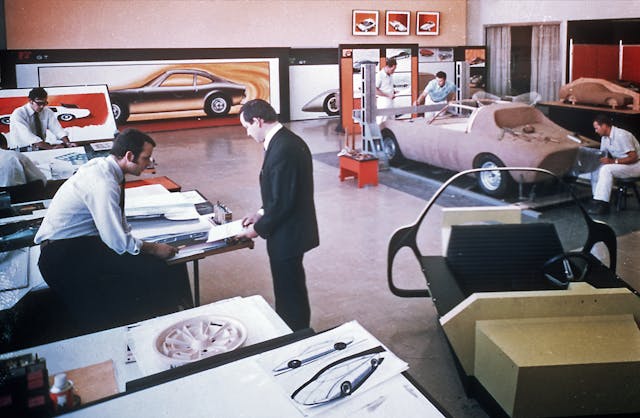
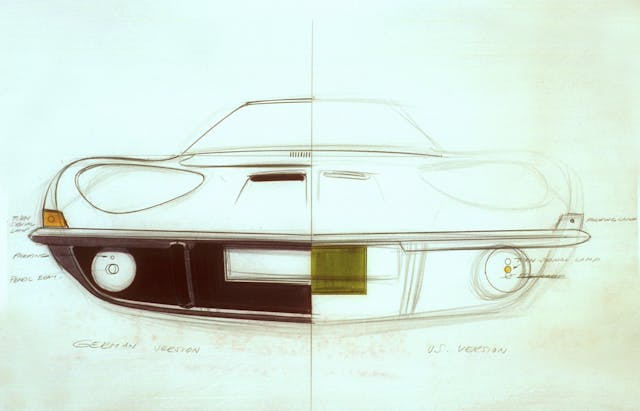
Part of the reason for the GT’s early success was its availability in the U.S., where it was sold through Buick dealers. Differences on the theme were minor between Federal and European variations; U.S.-spec cars usually lacked anti-roll bars and a heated rear window, for instance. European cars could be specified with a radio, three-speed automatic gearbox, fog lights, and a passenger-side door mirror, but available on both sides of the Atlantic was a ZF limited-slip differential, although not that many buyers paid the extra for one.
Although the GT was billed as a 2+2, the back seat wasn’t a place in which anyone would want to spend a significant amount of time. At a push you could just about squeeze one passenger in sideways, behind the high-backed front seats, and as if that wasn’t enough, there was no trunk lid or tailgate. Instead, any luggage had to be fed into the cargo area via the back seat. It wasn’t as though there was much carrying capacity anyway; the spare wheel took up most of the available space.
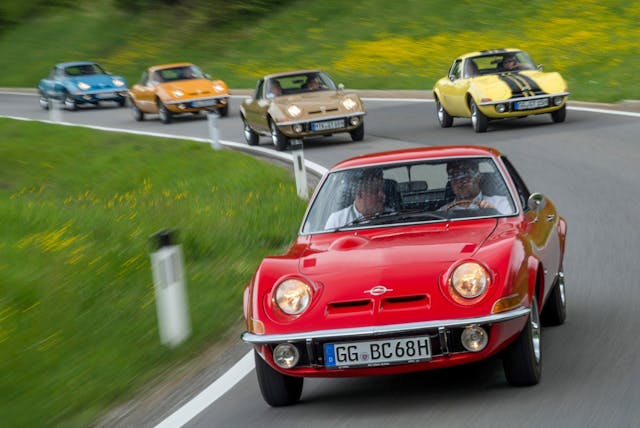
When Motor tested the GT in March 1969, writer Paul Frére noted: “The GT is extremely well behaved and should go a long way to change public opinion about the roadworthiness of Opels. With radial tyres, good weight distribution and rather stiff springs, both handling and roadholding are excellent. On faster bends the car is almost completely neutral and cornering speeds quite high. The light and very positive rack-and-pinion steering combine to make up a car which is extremely pleasant and enjoyable to drive.”
Sales ticked over quite nicely at first, but by 1971 demand had started to wane. In an attempt to boost interest, Opel introduced the cheaper GT/J, with simplified instrumentation, trim, and exterior brightwork. It came only in 1.9-liter form, the 1.1-liter engine having been canned by this point, due to a lack of demand. The GT/J helped to boost sales a little, but the days of Opel’s affordable sports car were numbered.
Tougher U.S. impact rules led to the GT’s demise in 1973; it wasn’t worth it for GM to engineer the car to pass, as sales had slowed to a trickle. Of the 103,463 GTs built, by far the rarest was the 1100, with just 3573 examples made. The GT/J was the next rarest, with 10,760 built, while the 1900 GT accounted for the bulk of production, with 89,130 rolling off the production lines.
That wasn’t the end of the GT brand, though, because it was revived in 2007, for an all-new model that would be sold in the U.S. as the Pontiac Solstice and Saturn Sky. GM would revive the GT name once again on a 2016 concept, but now that Opel is part of Stellantis, the arrival of yet another GT seems highly unlikely.
***
Check out the Hagerty Media homepage so you don’t miss a single story, or better yet, bookmark it. To get our best stories delivered right to your inbox, subscribe to our newsletters.
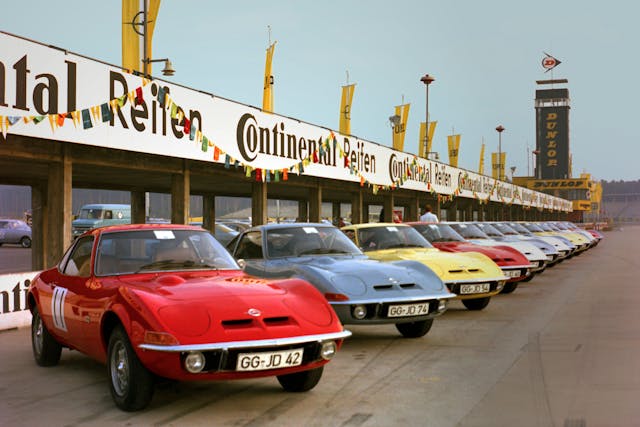
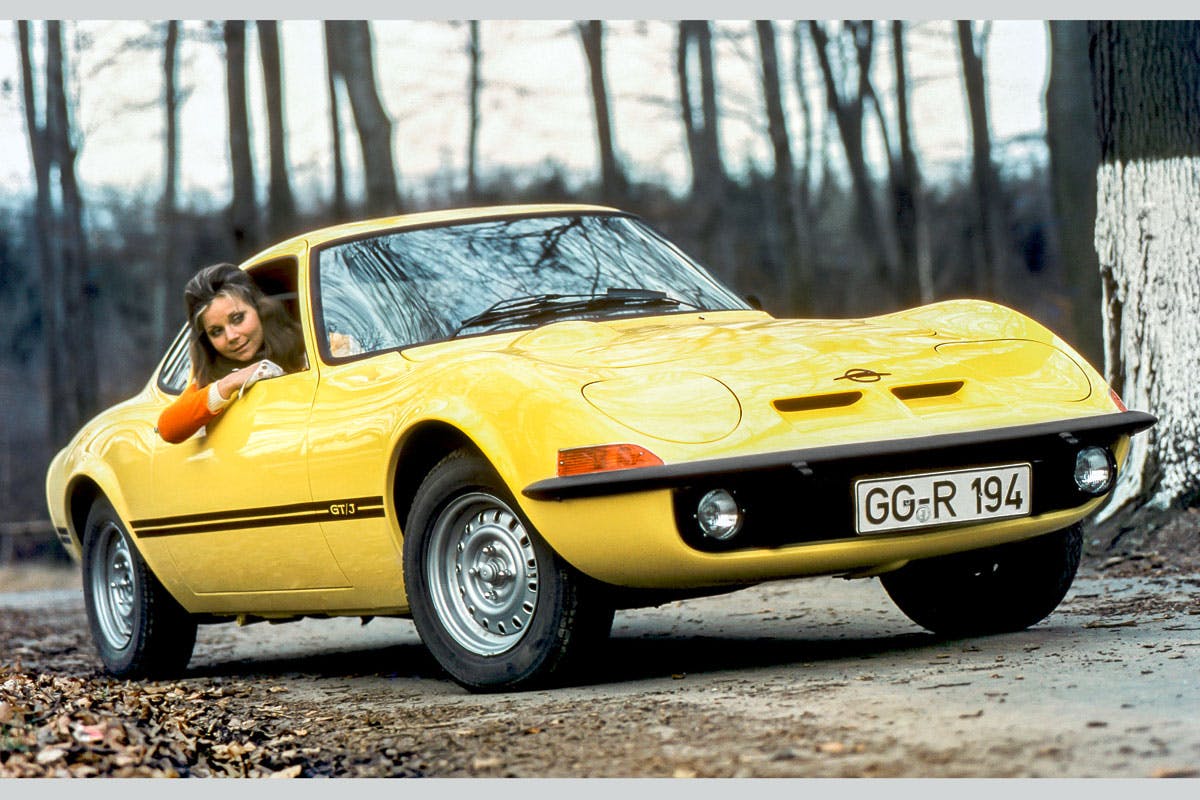
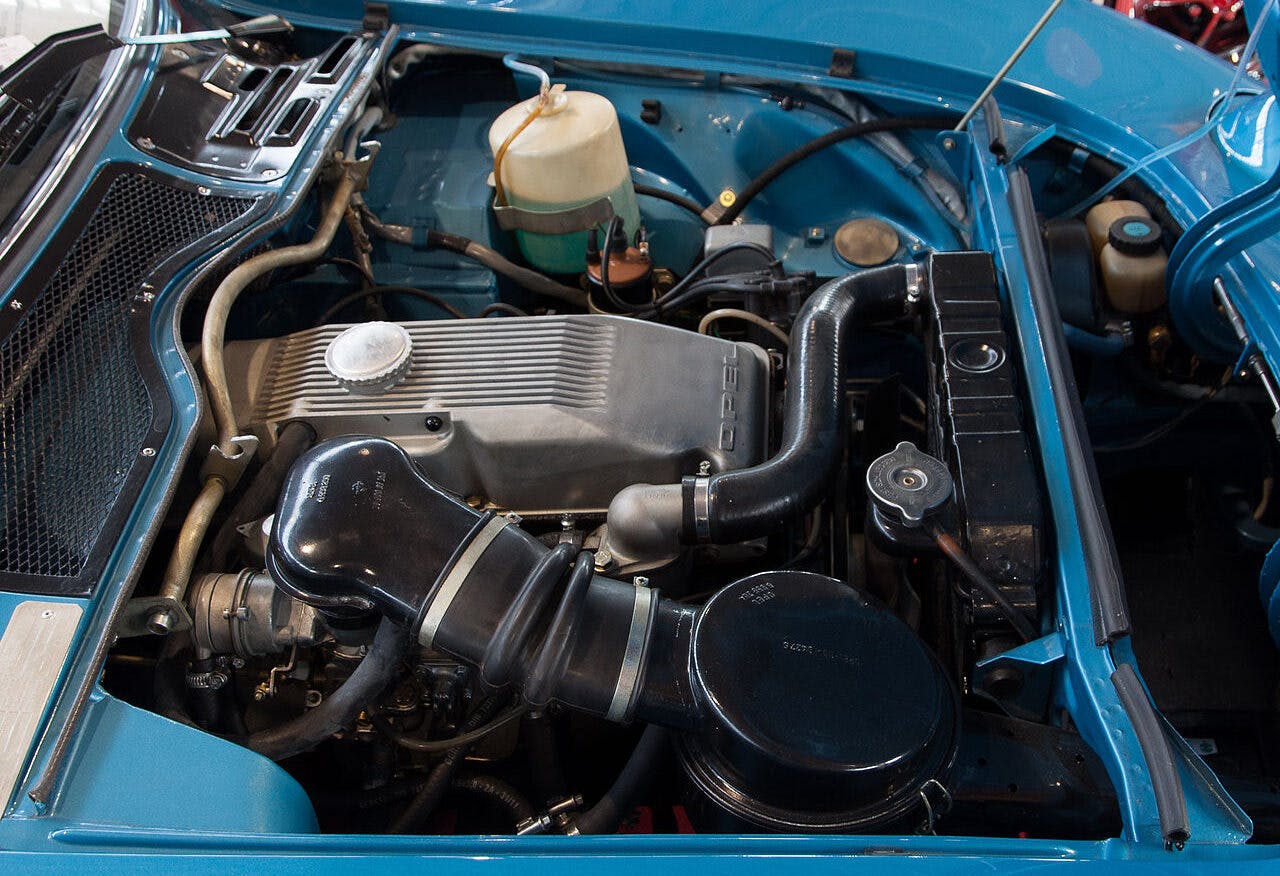
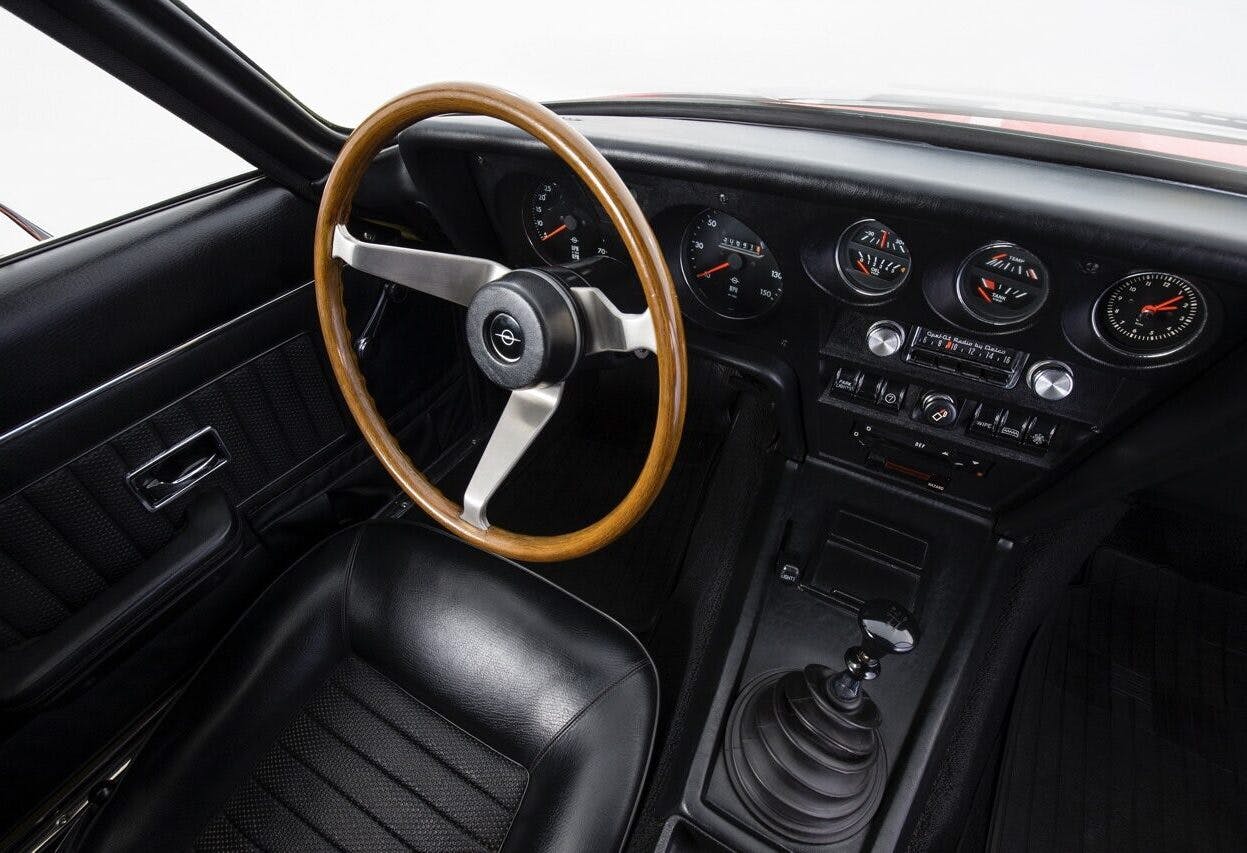

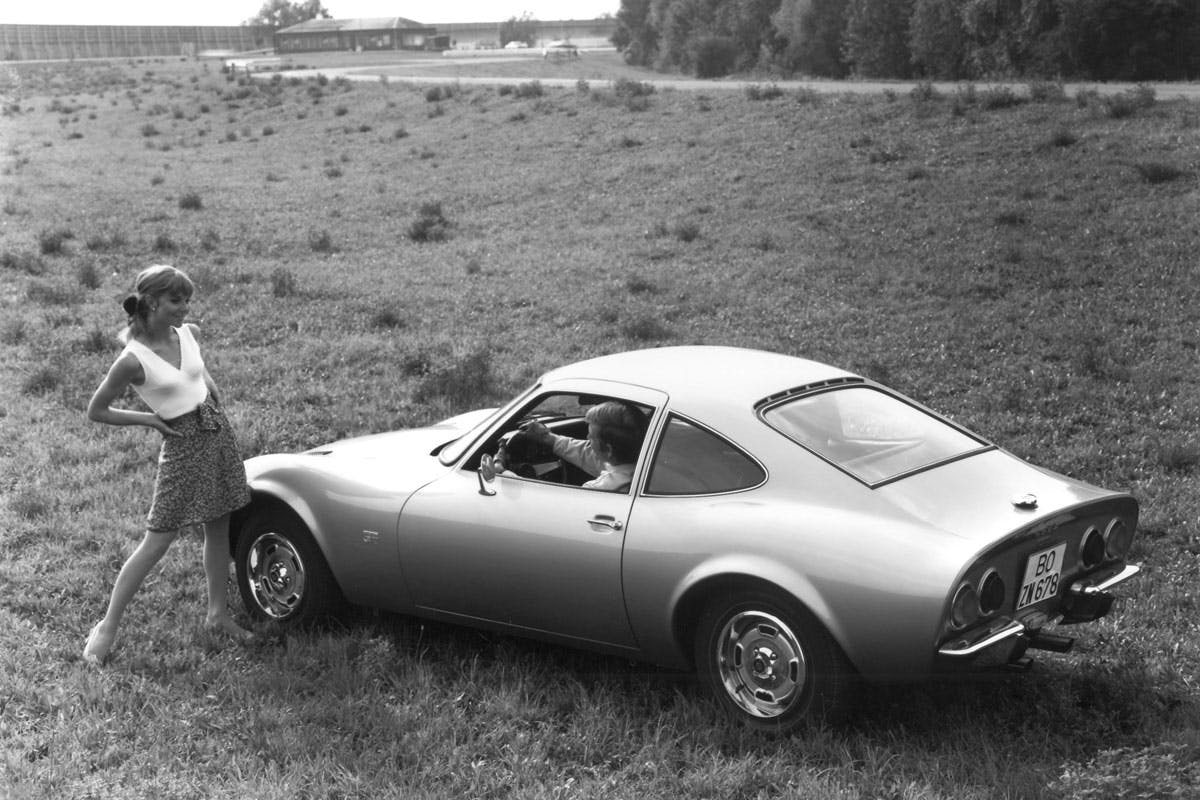
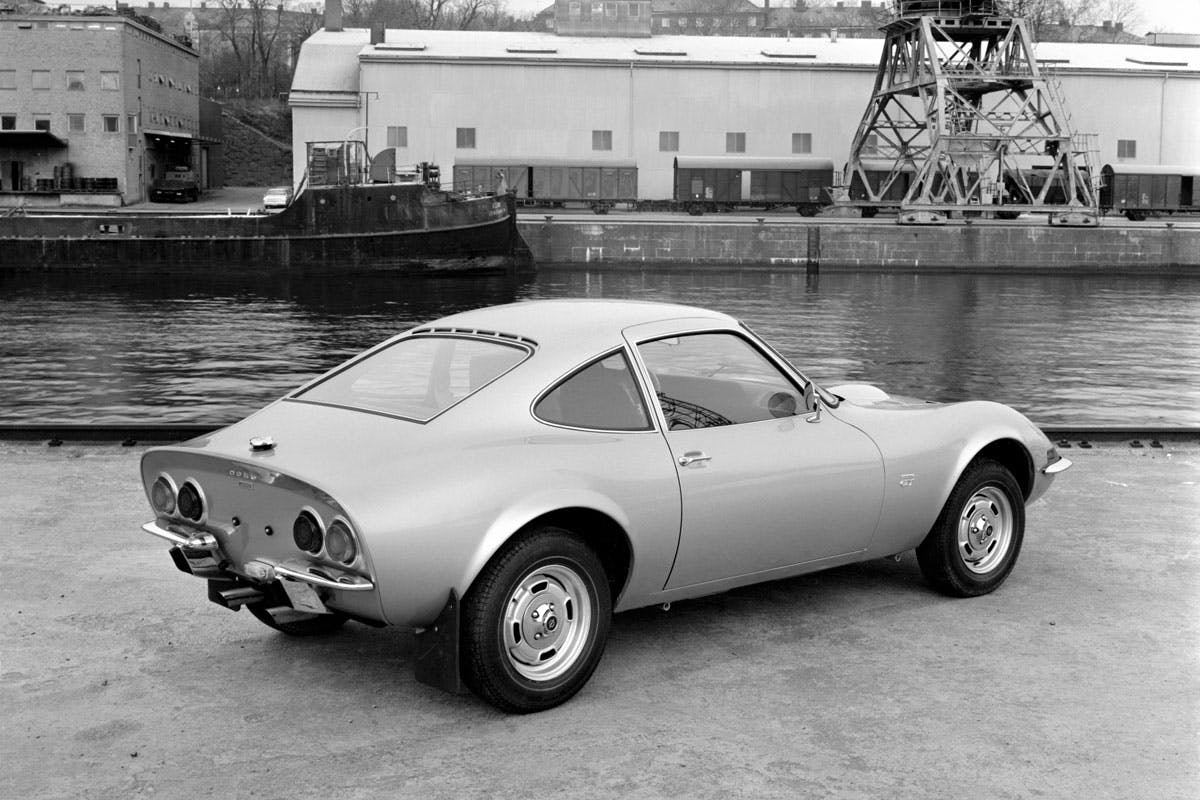


We saw a few of these come into my auto shop over the early years… early 70s?
One thing… that I think I remember correctly…. was the handle to flip over the hide-away headlights?
Maybe someone can confirm or refute that “very cool” feature… as I remember it.
The GT did share the Opel Kadett undercarriage that was also shared by some other cars… not sure which?
That handle was on the console right beside the gearshift. You pushed it forward or back to flip the lights. IIRC, they rotated to the left to pop up and to the right to go hide.
They had flip over headlights, however would shear off the bolts that held the headlight assembly. Was a real pain to replace. I had to replace mine at least twice.
My father had a1970 with a 1900 high compression engine 2 barrel progressive carb. When the second barrel kicked in it was very fast. I ran mustangs and vets and didn’t embarras myself.
As I write this, my ’71 GT should be just about back on the road. I bought it from the estate of a friend who passed away and as largely a labor of love for my friend, my son and I got it running until various problems sidelined it again. Chief among them was a rotted fuel tank. An outlet called Opel GT Source which is the only company that keeps these cars on the road at all, finally reproduced fuel tanks. Until then we had debated putting a racing cell in it or just junking the project.
Biggest issue for these little cars is they rust like a Fiat. Once all screwed together though, they are fun to drive, and look great. They were killed off by crash requirements and a little car called the Z.
I had one in the ’70s. Could do 105 mph all day long (or until the bears caught up). Handled nicely. Got its best mileage at about 85 mph. I don’t know where the author got his info about a back seat; none of the ones I saw had a rear seat. For a sports car, it had plenty of room for luggage, but you did have to load the compartment from the front. The battery sat on the lower body panel in front of the radiator and required regular rinsing to avoid acid spillage. If this was not done, the panel would rust out pretty rapidly. My first wife totalled it out a few weeks before the divorce was final.
Great little car. I had a ’71. Fitted it with an aftermarket luggage rack that attached through the vent slots at the top of the rear glass and the rear bumpers. A buddy and I road tripped it from Michigan to the East Coast and back. Great on gas and cruised at 75 all day long. Previous poster was right about the decline being partially caused by the introduction of the Datsun Z. I traded mine for a ’74 260Z. Opel was fun but the Z was a much better car.
Just to put the word out on another site
Buick Club of America.
welcomes all Opel’s. The Show this year is on
July 10 to 13
Strongsville Ohio
I hope to bring my 1971 GT to the Buick Gathering. I joined the Buick Club to gain admittance. I have owned it for 51 years. It is not restored and is kind of rough but i enjoy driving it. I just moved back to the Cleveland area after being in PA for 35 years.
Was a student at CU/Boulder in the ’70s. Roommate had an Opel GT. One night we piled five adults (three guys, two women) in it (two in back, two in passenger seat, one in driver’s seat) and drove up Flagstaff, past Gross Reservoir, and back to Boulder on Hwy 93. Exceeded 100 mph on Hwy 93. Younger and stupider then.
When I was 20, I bought a Gold 1969 Opel 1900 4speed as soon as they were at the Buick dealer…I sold it 5 months later…It was a penalty box from the start: in the first two months the front shocks broke, the air pump bit the dust, and various other heartaches occurred. If that had been the end of it, I would have kept it, but the final straw came two months later. I was getting an oil change at a friend’s shop when the body guy from next door came in and looked over the car. He said to me “You had a wicked front end crash.” I said no. Long story short, the dealer trashed it when it came off the truck and bondo’d it up before they sold it to me…
Lesson learned…
Air pump on an Opel GT. I’ve had one for nearly 50!years and there is no “air pump”?
Some very early ’69 GTs did indeed have an air pump to reduce unburned hydrocarbon emissions. They all failed rapidly and were easily removed, so no one ever sees them. I’m fixing an early ’69 GT (split front bumper, flat taillight panel, turn-signal stalk button for high-beams, etc.) that still had remnants of the air injection system.
Some very interesting information. For years people have referred to the GT as the baby Corvette but I’ve always maintained that it’s the other way around (the GT was the Corvette’s father?) since the GT’s shape preceded the C3. Also, the GT’s design was supposedly on the drawing board since ’62 or ’63 and I wondered how Opel scooped Chevrolet to the punchline. But now I see the connection in that there was input from an ex-Corvette designer. I can now sleep in peace at last. Now, WRT to why the demise of Opel in the US market, one thing was the stronger German currency making them unaffordable in the US. The cost of an Opel Manta was close to that of the BMW 2002 but with a lot less prestige. But the GT is not forgotten and the prices have significantly increased in the past 10 years. The Asconas and Manta’s (and Kadettes) are “less remembered.”
Fixed a lot of broken “ flipper “ headlights on these car . People used to love flipping them open and shut until the three bolts holding them sheared off . Pain to repair !
I had a truly special Opel GT that I bought from a friend. Someone prior to him had done some terrific body work: the back end aft of the rear window was extended about 6″, the roof was cut to a targa top, it was lowered with wide mag wheels and the fenders where flared to match the new width. Underneath the hood, dual Weber 45DCOEs gave the car more oomph and an intoxicating intake growl. Unfortunaly, cramming the aft Weber meant there was no room for a proper air filter on cylinder #4’s intake horn. By the time I got the car, that cylinder was running low compression. That issue as well as some other body and interior issues meant the car needed more work than a high school kid could afford. I had dreams of fabricating door scoops a la Dino to make it look even cooler and more Ferrari-like, but it wasn’t to be. I sure hope the guy who basically stole it off me made it right.
He could start by using the correct Cannon manifold for GT’s. It was very short so the carbs and air cleaner would fit.
There was a guy 2 years older than me whose father died and left him some money. In college he had a new Opel GT and then a new Fiat 124 Spyder…. I liked both cars and we all were envious of him. He became a banker and did well…. but having those cars at a young age…..
Owned one in High School mid 70’s, white with a black vinyl top. Fast forward, bought one in late 80’s as part of my car and mostly classic boat collection. The Opel GT is a cool car.
we had one when I was a kid, and there was no back seat of any kind in ours but I rode back there plenty of times with my sister, fortunately were we small and skinny
I always liked them.
In the fall of 1969 I recall seeing several in front of a Buick dealer fronting I-90 in Montana…probably Billings. It was the first time I’d seen one in the flesh. Great car.
For several years there was one parked in front of a campground on U.S. Hiway 2 (A great cross country trip for those who want to avoid interstates) just west of Sandpoint, Idaho. It was hooked to a small travel trailer as an attention getter.
A couple of years ago it disappeared, I hope it found a good home.
Finally, for pop culture fans, Maxwell Smart drove one at the beginning of Get Smart between his Sunbeam Alpine Tiger and Karmen Ghia days.
Buick dealers took on the sales of Opals including the GT after Austin Healeys stopped being made in ’67 & Buick was without a foreign car sales presence. Love of my life, Barbi bought one. I remember it was fun to drive (not very fast but handled well) & it’s tranny was so smooth & slick to shift.